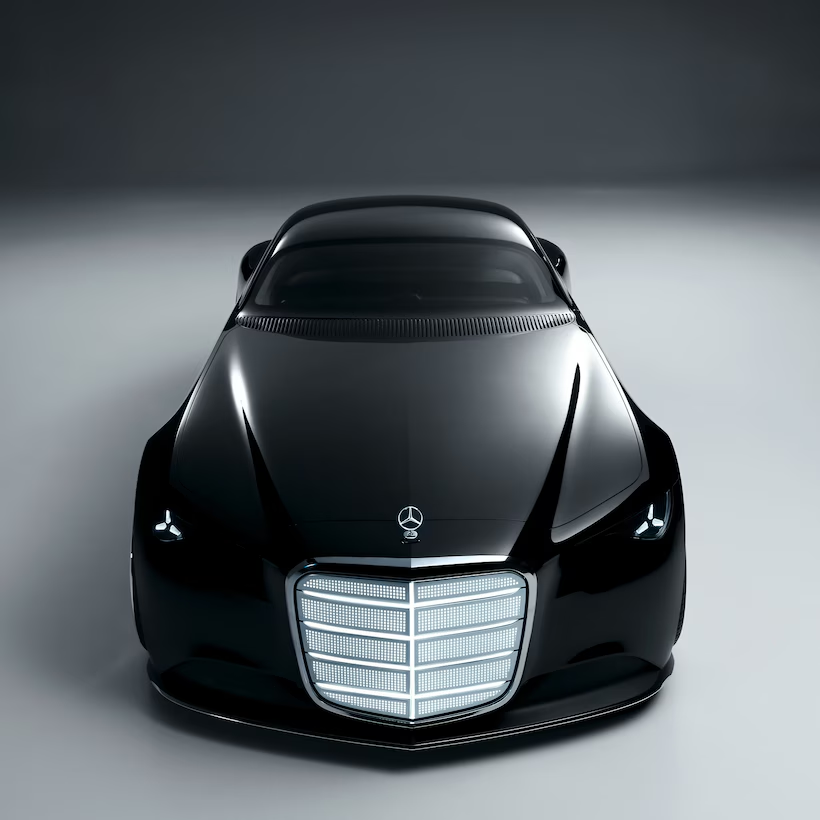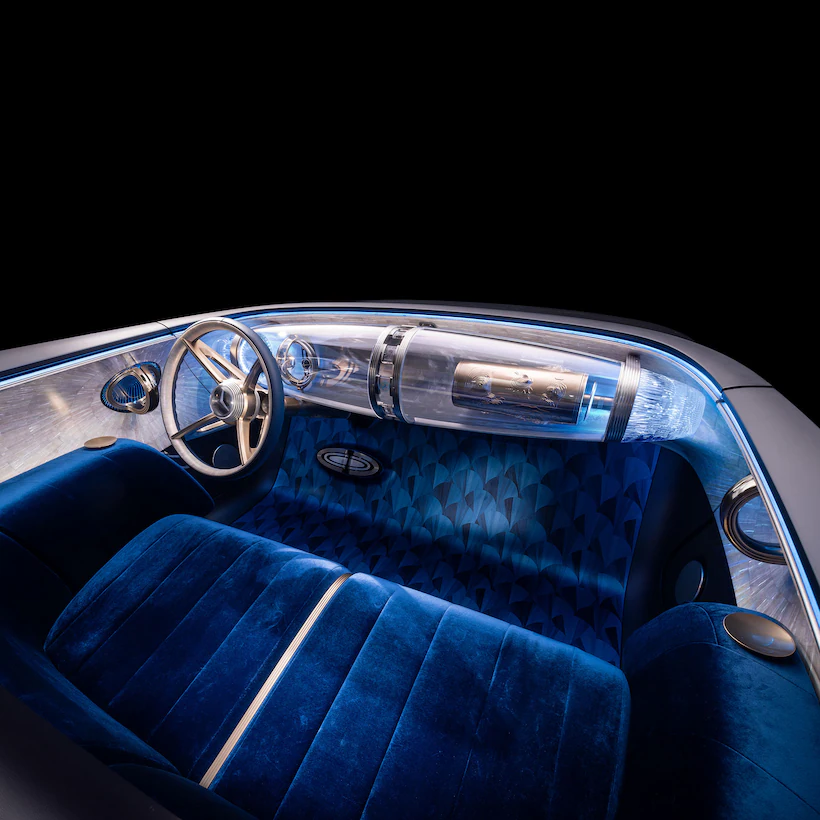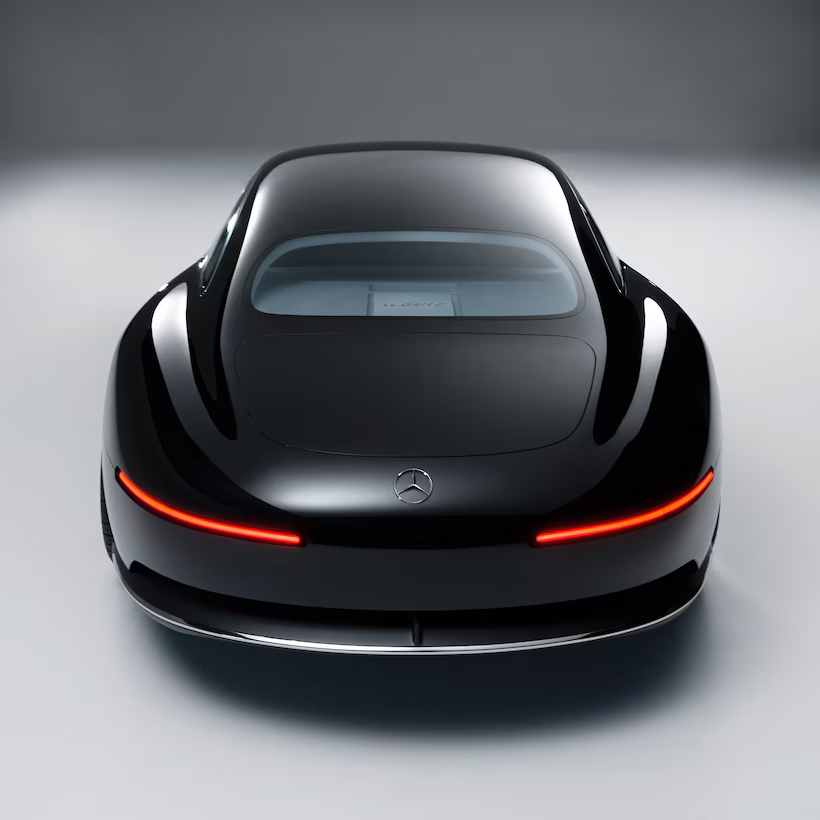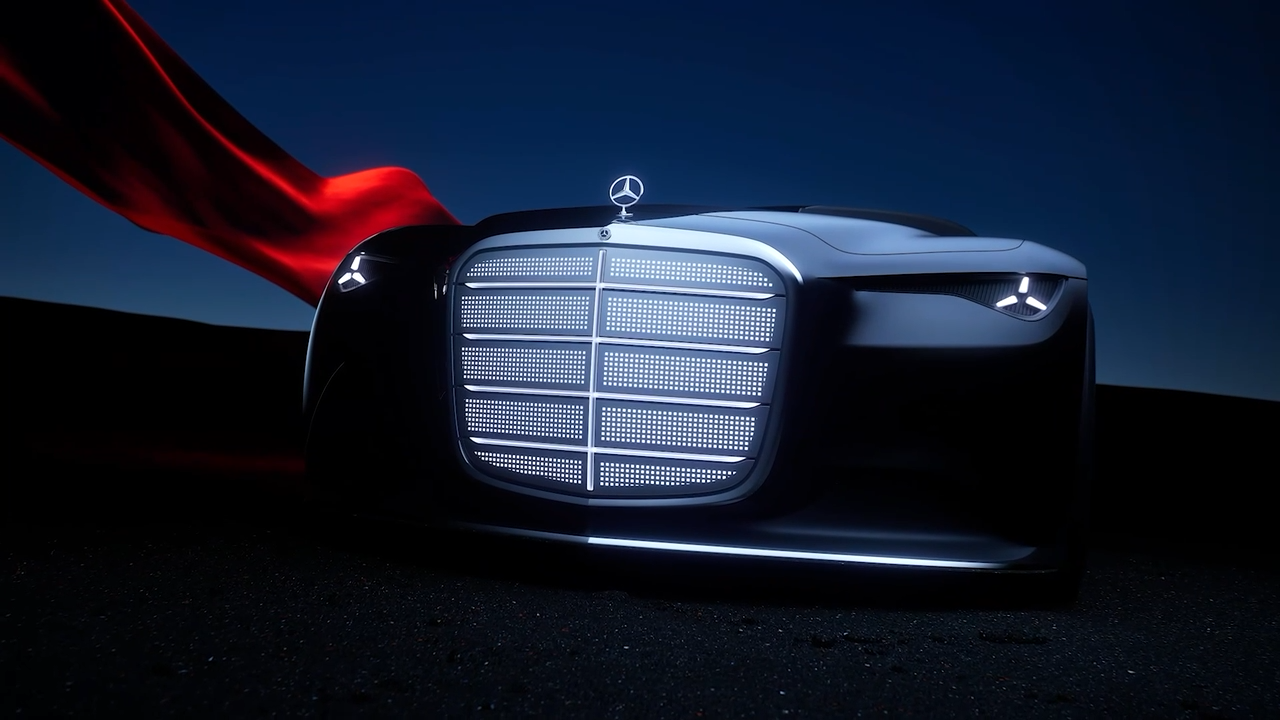At first glance, it is breathtaking. A long hood, a boat-tail rear, a low stance that suggests elegance and power. Then the details draw you in. The glowing “Iconic Grille,” framed in chrome, pulses softly. The star above it shines not by reflection, but with its own quiet light. In a world going silent with electric motors, illumination becomes identity.
Step inside and the Vision Iconic transforms. The cabin is no longer a cockpit but a lounge, layered with deep-blue velvet, brass accents, and mother-of-pearl inlays. A floating “Zeppelin” dashboard stretches across the front, combining analog clocks with hidden digital displays. It is a space designed not for rushing, but for pausing, for noticing details, for letting your fingers trace surfaces that feel human despite the digital intelligence beneath them.
Beneath that calm lies a web of technology quietly at work. Neuromorphic computing, a brain-inspired AI system, reacts in real time, managing autonomous driving with remarkable efficiency, while rear-axle steering gives the long, sculpted body surprising agility. The car is aware of its surroundings, capable of Level-2 autonomy in urban traffic and a vision of Level-4 on highways.
Sustainability is embedded in the experience. The Vision Iconic’s body is coated in solar paint, wafer-thin photovoltaic cells that capture sunlight to extend its range. No bulky panels, no gimmicks, just a subtle, intelligent surface powering the car elegantly. Yet skepticism lingers. In everyday conditions, the ideal sunlight needed to reach Mercedes’ claimed annual range is rare. Some wonder whether this is more art than practical mobility.
Not everyone sees the Vision Iconic as entirely successful. While its revival of Art Deco elements has been celebrated for boldness, critics have called it overly theatrical or even kitsch. It flirts dangerously with nostalgia, they argue, at the expense of realism. Gorden Wagener, Mercedes’ design chief, admits it openly.

Even enthusiasts are divided. Some praise it as a brilliant link between past and future. Others scoff at the interior’s extravagance, questioning whether any customer would want velvet and brass in a car built for 2030. Beyond aesthetics, practical questions remain. Battery chemistry, solar efficiency, and production feasibility are untested outside the concept stage.
Yet the Vision Iconic’s ambition is undeniable. It is not about immediate production. It is about imagining a future where cars are not machines alone, but experiences. Where luxury is measured not in horsepower or chrome, but in emotion, presence, and the quiet confidence that even in silence, a car can communicate character.
For all its contradictions and provocations, the Vision Iconic pushes boundaries. It merges craft and technology, sustainability and beauty, nostalgia and forward-thinking innovation. It challenges assumptions about what a luxury car can be in a world moving toward autonomy and electrification. Even if it never fully reaches the showroom floor, it leaves an impression: the future of mobility may be quieter, cleaner, and smarter, yet it can also be daring, elegant, and unforgettable.
Photo Copyright: carwow.de, doubleapex.co.za & Mercedes-Benz AG
Secure your MOTION MAG copy online now: EDITION SIX





